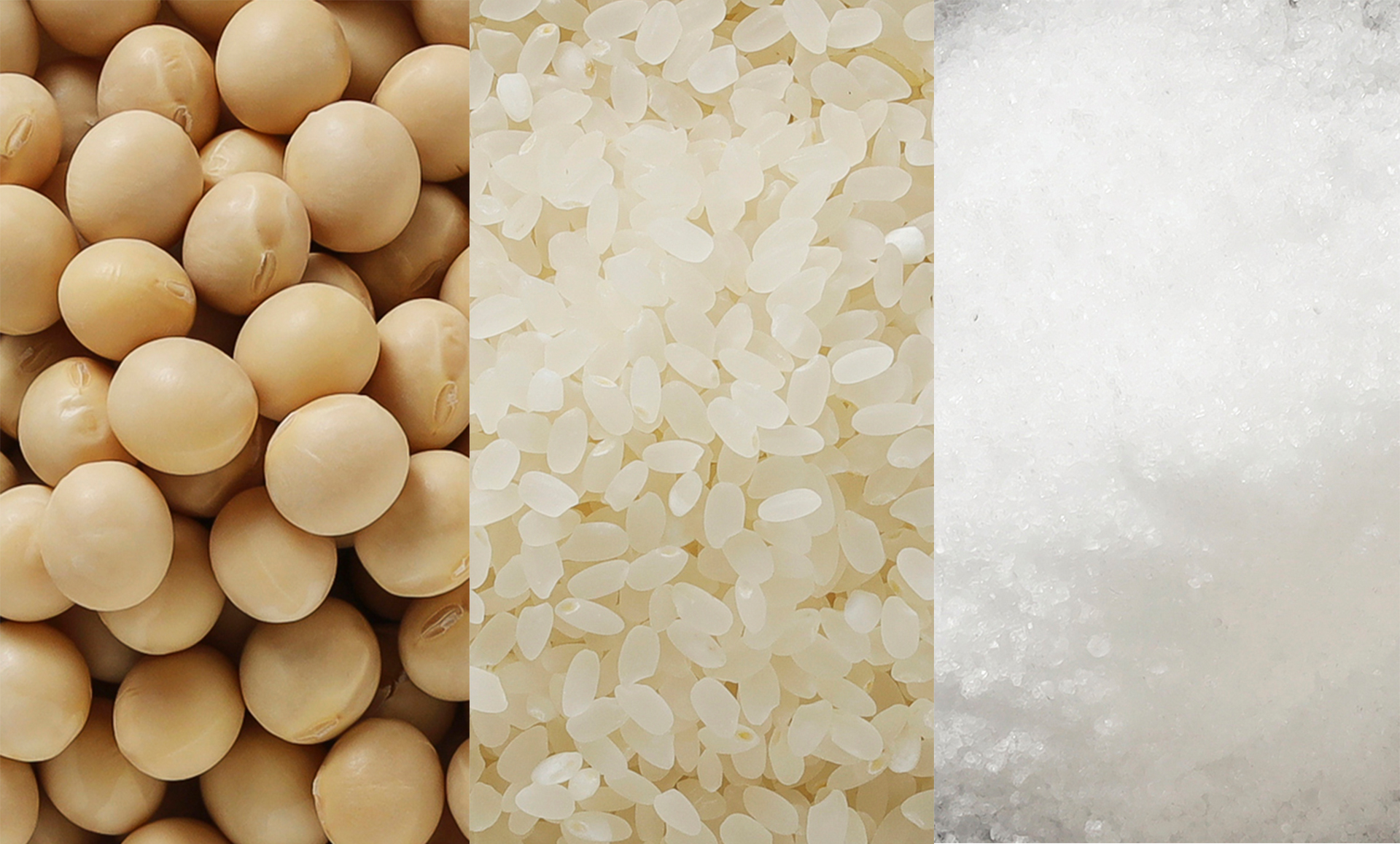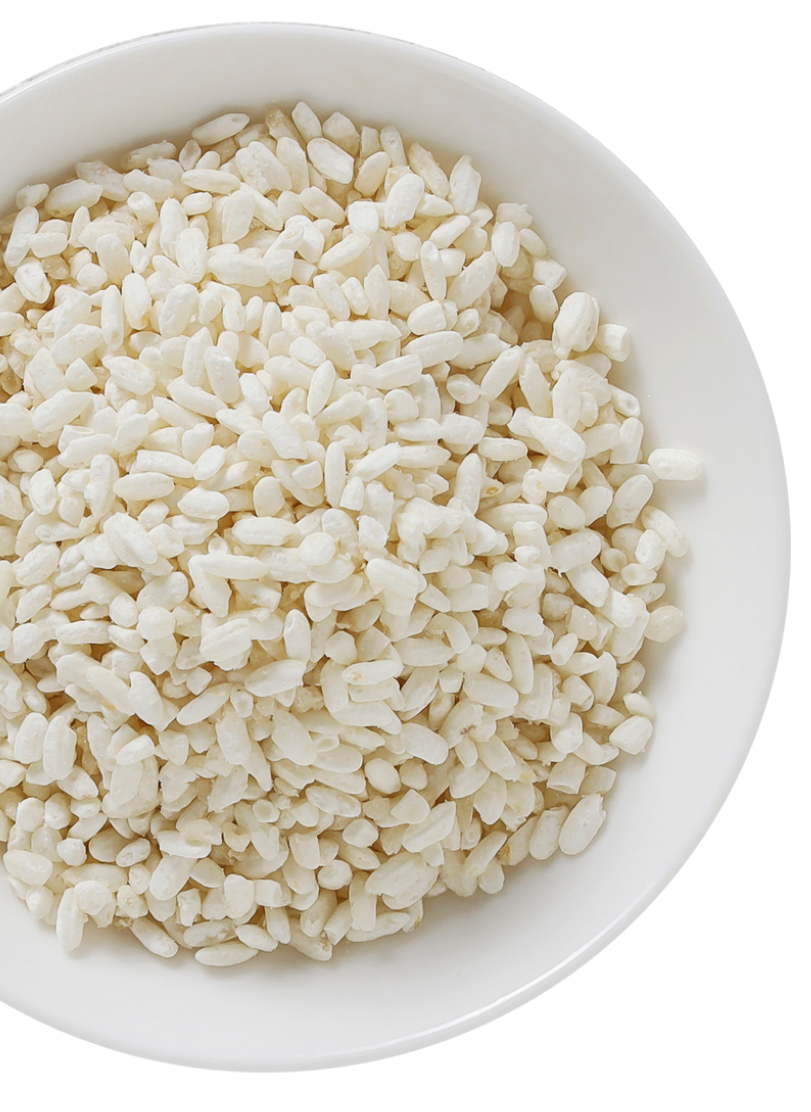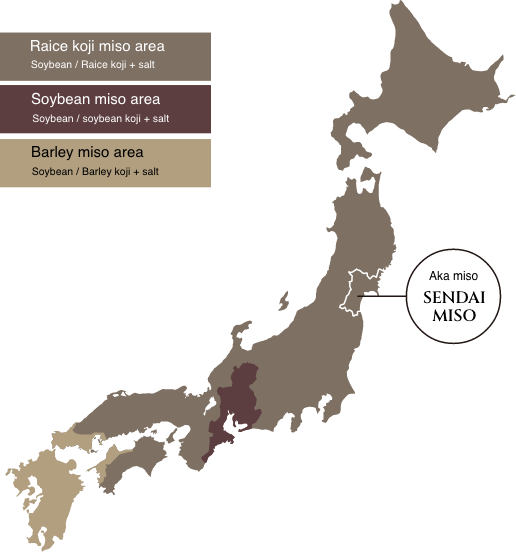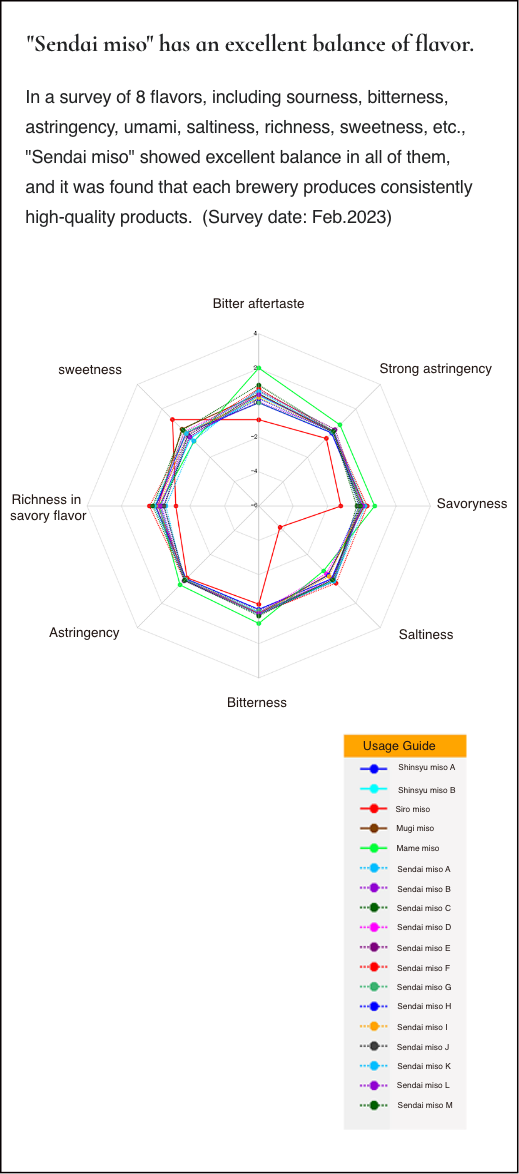

The flavor of miso is determined by the koji mold.
Rice koji, barley koji, and soybean koji are produced
by cultivating koji mold on steamed rice, barley, andsoybeans.
Miso is classified into "Kome(Rice) miso,"
"Mugi(Barley) miso," "Mame(Soybean) miso," and
"Chogo(Mix) miso" based on the type of koji used.
The flavor of miso varies depending on the amount of salt
which determines the level of spiciness, and the "Koji Buai."
"Koji Buai" refers to the ratio of koji (rice or barley) to soybeans,
and a higher ratio results in sweeter miso.

Miso can be classified into "Shiro miso," "Tansyoku miso,"
and "Aka miso" based on its color.
Miso color is primarily determined by the length
of fermentation and aging.
As a general rule, longer fermentation and
aging periods result in darker miso.
"Shiro miso" takes about 5 to 20 days to ferment,
"Tanshoku miso" takes 2 months or more,
"Sendai miso," which is "Aka miso," is aged for 4 months or more
to achieve a rich and deep flavor.

Shiro miso

Tanshoku miso

Aka miso
Sendai miso
Miso is a nutrient-rich and functional food that is essential
to the daily diet of the Japanese people.
Miso is said to have various health benefits, such as reducing cholesterol,
preventing cancer, preventing stomach ulcers, and anti-aging effects.
In particular, "Sendai miso" is a "Aka miso"
and is said to contain a rich amount of melanoidin,
making it highly antioxidant.



